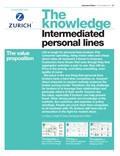We go behind the scenes in personal lines
Personal lines brokers have been doubly hit in the past five years - firstly by arrival of direct online sales technology and secondly by the financial downturn.
The market has changed a lot: once a people-driven business, it is experiencing data-led developments and a focus on process. Insurers increasingly tailor policies to specific market segments, defined by whatever customer data they can get their hands on.
Quality business is seen as coming from risk-averse, financially stable individuals willing to pay higher premiums for a belt-and-braces policy. At the riskier end of the spectrum, products are pared to the essentials and priced for an expected higher number of claims.
Aviva uses credit scores in its customer evaluation. In a market like that, brokers might even find their clientele classed as sub-prime.
Affinity partnerships are more prevalent and powerful. Allianz is targeting £150m GWP through its partnership with BMW. Online direct sales supported by slicker systems are cutting costs. Profitable growth is the new mantra.
RBSI has exited certain unprofitable motor lines. Its number of live policies from motor partnerships fell to 474 in the first half of 2011, down from 755 in the same period in 2010. The number of policies classed as other (largely discontinued personal lines broker business) was 211, down from 988.
Ageas committed to a specific segment of the broker market with its £52.8m acquisition of over-50s broker Castle Cover, to sit alongside the group’s other over-50s firm, RIAS. It’s a smart move, since over-55s are less likely to shop online: among 16 to 54-year-olds, 21.7% are more likely to buy insurance online than not, while for the over-55s it is 12%.





































No comments yet